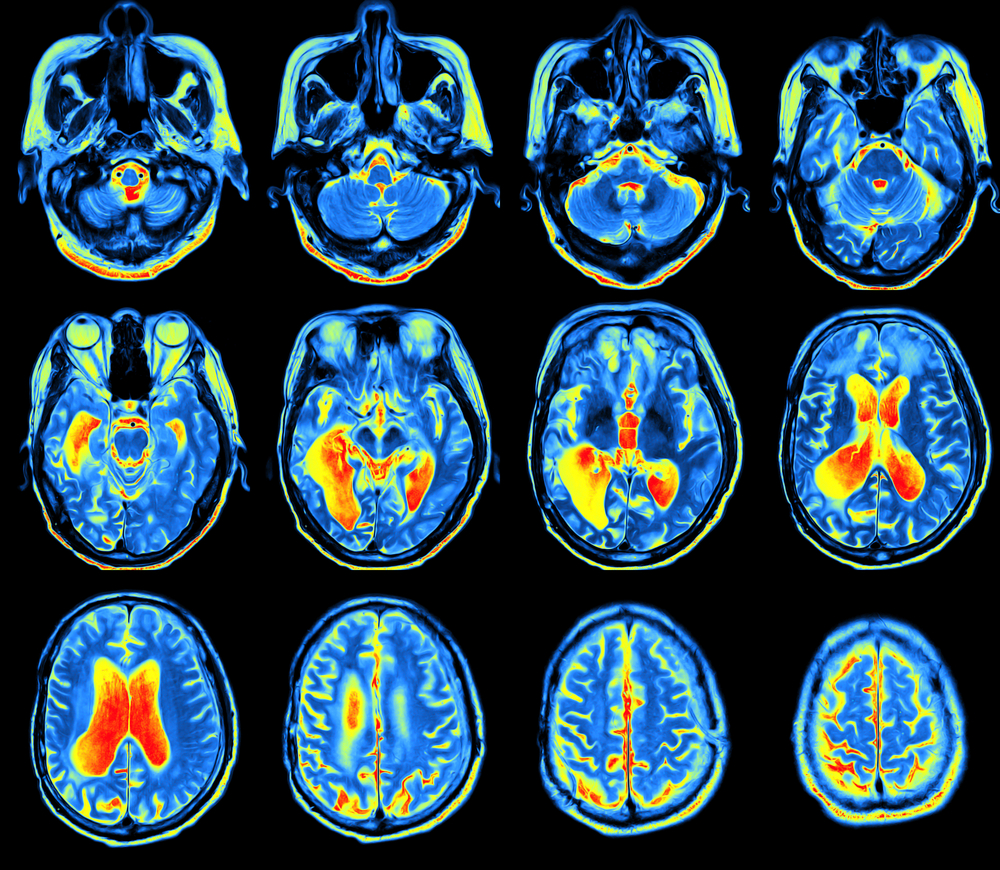Innovative Tool Identifies New Alpha-synuclein PET Tracers for Parkinson’s

An innovative computational approach for identifying new alpha-synuclein tracer molecules could be used to track the progression of Parkinson’s disease, according to a recent study.
The study, “Identification of a nanomolar affinity α-synuclein fibril imaging probe by ultra-high throughput in silico screening,” was published in the journal Chemical Science.
A hallmark of Parkinson’s disease is the buildup of alpha-synuclein protein aggregates, or clumps, within brain cells. These clumps are found mainly in dopamine-producing nerve cells, or neurons, where they appear to impair neuronal communication, or the brain’s way of sending messages to and from different regions.
Given the key role of alpha-synuclein aggregates in the development and progression of Parkinson’s disease and other neurodegenerative disorders, these protein clumps are seen as potential therapeutic targets.
Positron emission tomography (PET) is a non-invasive imaging technique that uses radioactive molecules, or probes, to image tissues and organs, allowing researchers and clinicians to observe metabolic processes inside the body. These imaging probes are small compounds that can bind to specific sites within a protein, for example, and allow researchers to visualize it on a screen.
A PET scan probe specific to alpha-synuclein would allow scientists to study how toxic clumps of this protein change both form and location as the disease progresses, becoming a first-in-class precision diagnostic tool for Parkinson’s disease.
Previously, researchers at the University of Pennsylvania were able to identify specific sites within alpha-synuclein where tracer molecules were able to bind.
Now, the same team has developed a high-throughput computational method that allowed them to screen millions of candidate molecules to see which ones would specifically bind to the known binding sites on alpha-synuclein.
“I really see this as being a game changer on how we do PET probe development,” Robert Mach, PhD, professor of radiology at the university’s Perelman School of Medicine and a study author, said in a press release.
“The significance is that we’re able to screen millions of compounds within a very short period of time, and we’re able to identify large numbers of compounds that will likely bind with high affinity to alpha-synuclein.”
The idea for this new approach came to Ph.D. graduate student John “Jack” Ferrie, the study’s first author, while he was learning computational chemistry methods as part of a Parkinson’s Foundation summer fellowship. He began working with the labs of Mach and university professor E. James Petersson, PhD, to put it into action.
The team began by identifying an “exemplar” of alpha-synuclein, using computational tools (in silico). An “exemplar” is a pseudo-molecule designed to be an ideal fit that is perfectly compatible with the surface of a protein of interest. Then, that exemplar is compared with real molecules that are available in a database to see which ones have a similar structure.
For the development of a PET tracer, the researchers focused on two specific binding sites of alpha-synuclein that they had previously identified: site 2 (residues Y39-S42-T44) and site 9 (residues G86-F94-K96). The exemplar for each binding site was screened against approximately 10 million commercially available molecules.
The scientists narrowed down the list of candidates, identifying the 50 molecules that best fit each exemplar. From these, the team purchased 17 compounds based on structural diversity, and tested their relative affinity, or binding strength, for the two alpha-synuclein binding sites.
Of the set of selected molecules, two — compounds 2 and 6 — were considered as potential lead candidates. After further investigating compound 6, the researchers confirmed that it binded correctly to alpha-synuclein and did not affect the protein’s aggregation, making it a suitable imaging probe.
A library was then screened for similar molecules (analogs), with the aim of finding multiple molecules with improved affinity and selectivity for alpha-synuclein. Another compound, called compound 28, was found to be the most potent binder to alpha-synuclein, with higher affinity than compound 6 and apparent site-specificity.
The team then synthesized and characterized a derivative of compound 28 and added a radioactive label to it. The potential efficacy of this molecule as an imaging probe was tested using brain sections from mouse models of Parkinson’s disease.
Although this molecule provided an increased signal in regions that were enriched in alpha-synuclein aggregation, its chemical properties made the molecule unsuitable to accurately assess alpha-synuclein binding on whole brain sections.
The researchers believe this study demonstrates the validity of a powerful new approach for the discovery of PET probes for challenging molecular targets. They are now working to optimize their lead compound for PET studies in animals.
By developing reliable high-throughput tools that use detailed knowledge of protein structure, the goal of future efforts is to find new tracer candidates and get them into the clinic as soon as they are ready for testing.
“It is certainly accelerated compared to what’s typical,” said Petersson, also a study author. “This can be something that takes 10-15 years in industry, and we’re trying to do it in about five.”






